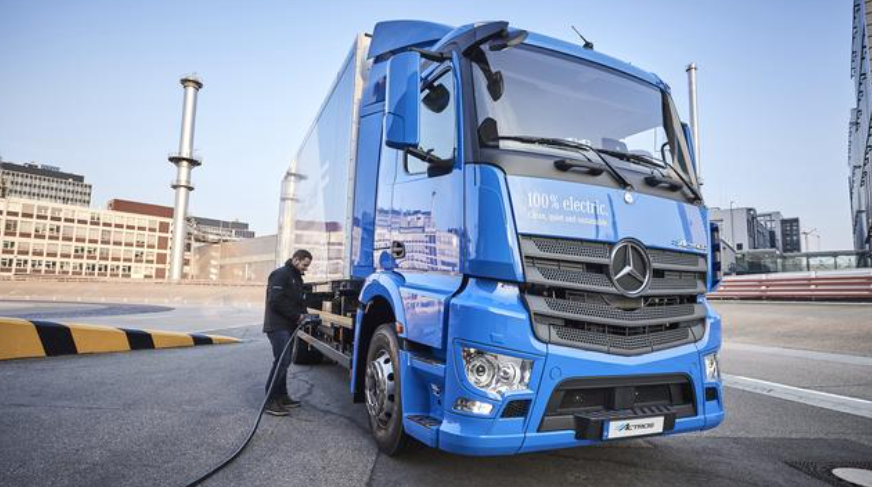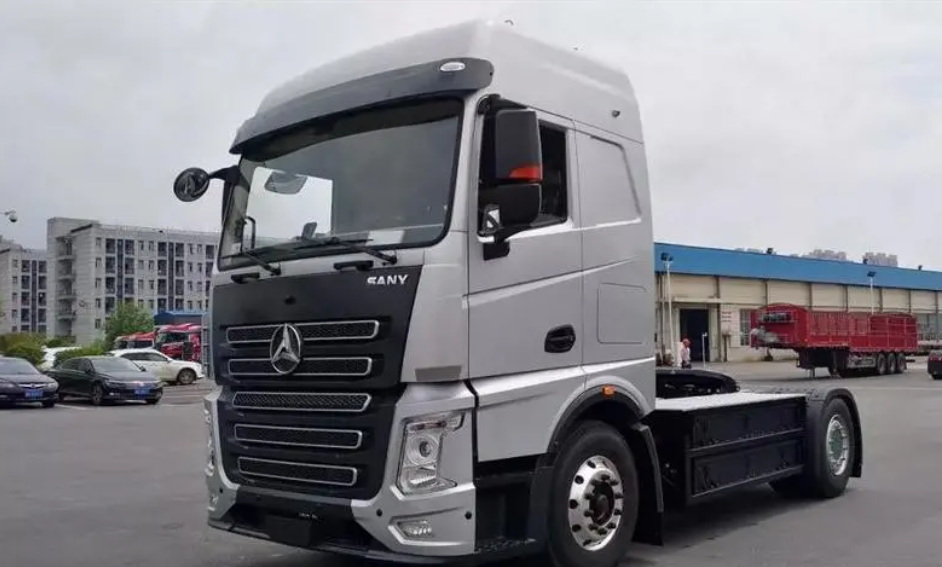Special Author| Wang Yunshi, Zhang Xiuli
Editor | Wang Lingfang
Despite slow growth in the entire automotive market, China’s new energy vehicle market has increased nearly twice as much in 2021, with sales reaching 6.887 million. If China’s new energy vehicles are viewed as a separate country market, its scale has surpassed Japan, becoming the world’s third-largest automotive market after China and the United States, successfully achieving economies of scale for new energy vehicles.
Last year, new energy vehicles made a contribution to China’s becoming the world’s second-largest automobile exporter, surpassing Germany. Nearly 10% of China’s 6.887 million new energy vehicles were exported to foreign countries, making huge contributions to energy efficiency, fuel saving, pollution reduction and carbon reduction in the world, particularly in Europe. In addition, China’s new energy vehicle market share reached 25.6%, which means that one out of every four new cars is a new energy vehicle, achieving the target of “about 20% market share in 2025” ahead of schedule.
Zhang Yongwei, Secretary-General of the China Electric Vehicle Hundred People’s Association, recently proposed that China’s new energy vehicle sales this year may reach nearly 10 million units, and the market share will reach 40%.
It should be noted that this high-speed growth mainly occurred in the field of passenger vehicles. According to data provided by the China Association of Automobile Manufacturers, the penetration rate of new energy vehicles in the freight truck, particularly the heavy truck above 14 tons, is only 3.7%, which is still at a very low level compared with the penetration rate of new energy passenger vehicles at 28.2%.
Although traditional heavy trucks are less numerous, they contribute more than half of the nitrogen oxide and particulate matter emissions from vehicles. According to research conducted by the University of California, Davis and other universities, residents living on both sides of urban highways and elevated expressways have significantly higher incidence rates of cardiovascular and respiratory diseases than residents in other areas; children and adolescents in these areas are also more likely to be adversely affected in brain development and intellectual development. In the United States, most of the residents living in these heavily polluted areas belong to low-income and minority groups. In China’s large cities, there are more residents in densely populated and high-rise areas, and more of them are middle- to high-income earners. Busy road freight may pose a significant threat to residents’ health.
Heavy trucks are also a major mobile source of carbon dioxide emissions. Even if all passenger and commercial vehicles are converted to new energy vehicles, the remaining about 7% of diesel heavy trucks’ carbon dioxide emissions can still reach 41% of the current carbon dioxide emissions of China’s entire vehicle fleet. In order to improve public health and respond to requirements for the dual-carbon goal, we must accelerate the process of clean energy commercial vehicles, particularly heavy trucks.China’s new energy buses are currently leading the world, and they have successfully achieved overtaking in new energy passenger cars. The advantage of new energy trucks should have greater potential. Last year, more than 25,000 pure electric heavy trucks were sold domestically, and nearly half of them were battery-swapping heavy trucks. In just two years, battery-swapping heavy trucks achieved the breakthrough from zero to over 10,000 units in the market. Recently, battery-swapping heavy trucks have conducted demonstration operations in ten cities, and their technology has become mature. To our knowledge, currently no battery-swapping trucks are in commercial operation outside of China. The fuel cell vehicle industry is also emerging rapidly. In 2022, the total sales of fuel cell heavy trucks exceeded 1500 units, and China held an absolute leading position in the world.
Therefore, now is a good time to promote the development of new energy trucks. Imagine if China’s battery-swapping heavy trucks enter the international market, it will not only bring trucks but also battery-swapping stations, modular batteries, and even upstream wind and solar energy systems optimized to match them. This is like exporting not just cars but also gas stations, excavated oil, and refined oil products in the gasoline car market 100 years ago. However, the current penetration rate of China’s new energy heavy truck market is only 3.7\%, which is too low to achieve economies of scale and must be vigorously promoted to improve industrial competitiveness.
Commercial trucks, especially long-haul heavy trucks, are the most difficult to achieve zero-carbonization. How can we accelerate the development of new energy trucks? The first thing needed is a new policy. In 2020, the California Air Resources Board voted to pass the Advanced Clean Truck (ACT) Regulation. The regulation requires major truck manufacturers to provide a certain proportion of zero-emission trucks in the California market, which increases year by year. By 2035, zero-emission trucks should reach 55\%-75\%, and heavy-duty tractor-trailers to 40\%; the ultimate goal is to achieve 100\% market share of zero-emission trucks by 2045.
We suggest that the government issue a Chinese version of the commercial vehicle credit policy as soon as possible. The dual credit policy has had an inspiring effect on China’s new energy passenger cars. With clear targets, manufacturers are competing to provide new energy products to the market, and social capital is flowing to emerging manufacturers of cars, batteries, fuel cell stacks, charging and hydrogen refueling equipment. The high-speed expansion of the market and fierce competition have enhanced the competitiveness of China’s new energy passenger cars internationally.
 Currently, among international automotive companies, only Tesla is willing to price the same product lower in China than in the US market. The market share of new energy passenger cars in China has reached 28\%. In 2022, among the top ten new energy vehicle companies in China, the US, and Europe, Tesla ranks first in the US, third in China, and sixth in Europe; BYD ranks first in China, but has no ranking in the European and American markets. However, BYD’s sales volume in the global new energy vehicle market is more than 30\% higher than Tesla’s. If the US were to adopt zero-emission credit policies nationwide instead of only sporadically in California and a few coalition states, Tesla could potentially rank first globally in sales volume. In 2021, 58\% of electric vehicles sold in the US were sold in California, which was the first state to implement zero-emission vehicle policies. China has adopted the dual credit policy to promote new energy vehicles throughout the country, which provides important impetus for the growth of domestic companies.
Currently, among international automotive companies, only Tesla is willing to price the same product lower in China than in the US market. The market share of new energy passenger cars in China has reached 28\%. In 2022, among the top ten new energy vehicle companies in China, the US, and Europe, Tesla ranks first in the US, third in China, and sixth in Europe; BYD ranks first in China, but has no ranking in the European and American markets. However, BYD’s sales volume in the global new energy vehicle market is more than 30\% higher than Tesla’s. If the US were to adopt zero-emission credit policies nationwide instead of only sporadically in California and a few coalition states, Tesla could potentially rank first globally in sales volume. In 2021, 58\% of electric vehicles sold in the US were sold in California, which was the first state to implement zero-emission vehicle policies. China has adopted the dual credit policy to promote new energy vehicles throughout the country, which provides important impetus for the growth of domestic companies.
In response to the introduction of the commercial vehicle credit policy, the Chinese government can also propose new energy goals for commercial vehicles, especially heavy-duty trucks, to further promote the support of local governments, enterprises, and capital markets. Unlike California, which focuses primarily on consumers and has almost no automobile manufacturing industry, the Chinese commercial vehicle manufacturing industry has many advantages: first, the fuel cell manufacturing industry in China is thriving; second, there are new commercial models for heavy-duty trucks, such as battery swapping; third, the domestic production of batteries is cheaper than international prices. As trucks are mainly manufactured domestically, China can set higher goals for heavy-duty trucks to seize the technological high ground in the industry, which will also facilitate the smooth and rapid development of other types of commercial vehicles into new energy.
Recently, the Ministry of Industry and Information Technology and eight other departments launched a national pilot program for comprehensive electrification of public sector vehicles in a very timely manner. In addition, it is very important to increase the demonstration of new technologies and business models. After conducting demonstrations of battery-swapping heavy trucks in pilot areas, it is necessary to accelerate the demonstration operation of battery-swapping long-distance heavy trucks on highways. If battery-swapping heavy trucks are more competitive than diesel trucks in long-haul operations, the full electrification of road traffic is just around the corner.
The author Wang Yunshi is the US Co-Director of the China-U.S.-U.K. New Energy Vehicle Policy Lab at the University of California, Davis. Zhang Xiuli is a senior consultant at the lab.
This article is a translation by ChatGPT of a Chinese report from 42HOW. If you have any questions about it, please email bd@42how.com.
